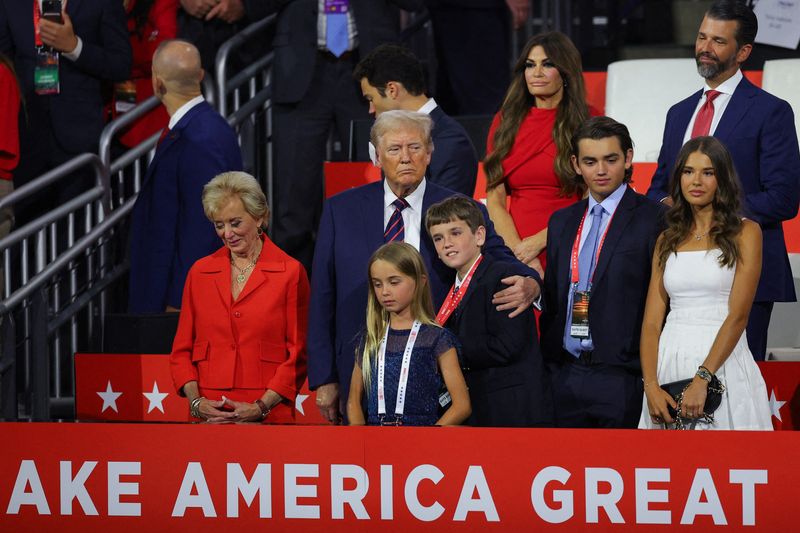Takeaways from the Republican National Convention
2024.07.18 18:06
By James Oliphant and Ross Colvin
MILWAUKEE (Reuters) – Donald Trump will accept the Republican presidential nomination before a raucous audience of thousands on Thursday, the crowning event to a gathering of the party’s faithful just days after the former president survived an assassination attempt.
Here are takeaways from the Republican National Convention.
IMAGE MAKEOVER
Trump’s acceptance speech will cap four days of an intense image makeover by the party, which sought to portray its nominee as a caring family man and selfless public servant who has been unfairly maligned by Democratic opponents who warn he could become a dictator if re-elected.
A stream of speakers talked about his warmth and empathy and some spoke of their previous misgivings about voting for him before seeing the light. Many noted his call for unity and not retribution following last weekend’s assassination attempt.
Watching the proceedings from a seat in the arena, Trump smiled and nodded at the recent converts as they spoke. The intent of much of the televised event appeared to be to win over undecided voters who say they are not completely opposed to him but don’t like the drama that often surrounds him.
The image projected over the four days, however, was wildly at odds with how he is perceived by millions of Americans. Democrats and critics within his own party have condemned his often inflammatory and sometimes racist rhetoric, which includes threats of retribution against political opponents and deporting millions of migrants he says are “poisoning the blood” of the United States.
Such rhetoric, however, also delights his diehard supporters, raising the question of whether Trump can maintain the image that Republicans worked so hard to create this week when he holds his first rally on Saturday with his newly minted vice presidential pick, Senator J.D. Vance.
ARE VOTERS CONVINCED?
All week, the Republicans said they were in Milwaukee to represent the forgotten men and women of the country. Trump’s problem is that many Americans have not forgotten the chaos of his 2017-2021 presidency and his efforts to overturn his 2020 election loss.
There are millions of Americans who will not consider voting for Trump under any circumstance. In polls conducted by Reuters/Ipsos and others, Trump has never amassed a majority of the country’s voters, even as Biden has faced mounting doubts about his fitness for office.
Trump’s challenge remains bringing in those voters in the middle. His campaign insists that is beginning to happen, with so-called Democratic “safe states” such as Minnesota and Virginia seemingly coming into play. Some polls now show Trump and Biden locked in tight races in those states.
Trump this week also may have done little to improve his standing with suburban women voters, another important voting bloc. Vance, for instance, has taken a more extreme stance on abortion in the past than Trump, something Democrats will look to exploit.

Christine Matthews, a pollster who specializes in tracking women whose votes can go to either of the two major parties, said the pick of Vance gives the ticket “a masculine energy” that might attract working-class men, particularly of color, but could alienate women.
“This choice is a calculation that they will not be winning over women in the suburbs of Philly, Atlanta or Phoenix but might be able to push their margins up with non-college men of color, particularly Hispanic men who on key cultural issues are closer to white men,” Matthews said.








